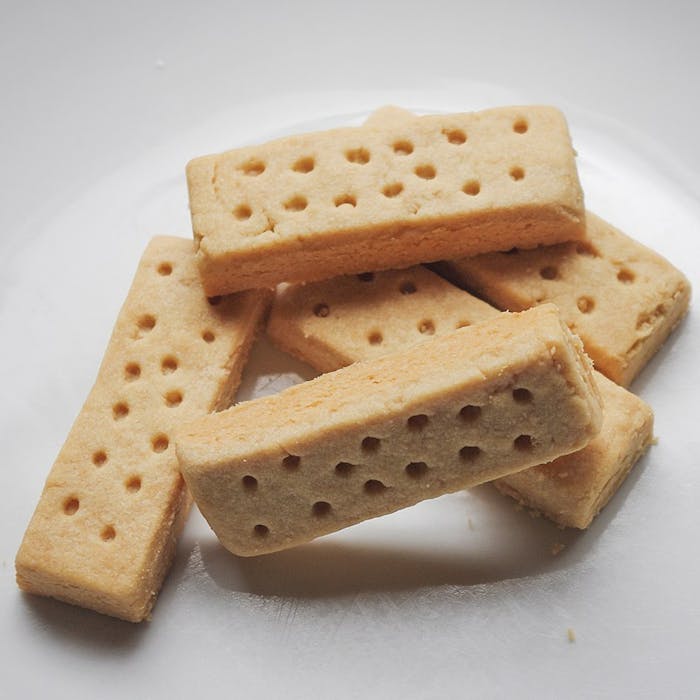
Scottish Shortbread
The origins of shortbread in Scotland can be traced back to the 12th centur, with the refinement of shortbread to closer to its contemporary flavour popularly credited to Mary, Queen of Scots in the 16th century.
She loved it and apparently gave the name Petticoat Tails to triangular pieces flavoured with caraway seeds.
Shortbread was once made from left over bread dough - hence the name Shortbread - and it was cooked at a low temperature until it dried out and resembled a rusk.
Over the centuries shortbread gradually lost its raising agent and gained dollops of butter and this is the version we know today. It is effectively a simple, sweet biscuit and we have a Mrs. Mclintock to thank for the first printed recipe, dating back to 1736.
It is often eaten at Hogmanay, and also at weddings where traditionally the groom breaks a piece of shortbread over the bride's head. If it crumbles, the marriage will be fruitful. (If the bride breaks a bottle over the groom's head, he will know he should have warned her before she spent a fortune on having her hair done!)
Scottish brands were gradually exported to the very many countries around the world where enterprising Scots themselves are to be found. Some new twists have also caught on, such as adding jam or chocolate.
Hundreds of years after Mary Queen of Scots got us hooked on Shortbread, our present Queen, Queen Elizabeth II, recently gave a Royal Warrant to a popular and traditional version so we can be sure that royal taste buds are still being tickled by sweet and sugary shortbread. What it does for Royal waistlines and Royal teeth - well, let's just say the Royal Family are keeping mum about it!
Further reading
Links to external websites are not maintained by Bite Sized Britain. They are provided to give users access to additional information. Bite Sized Britain is not responsible for the content of these external websites.
